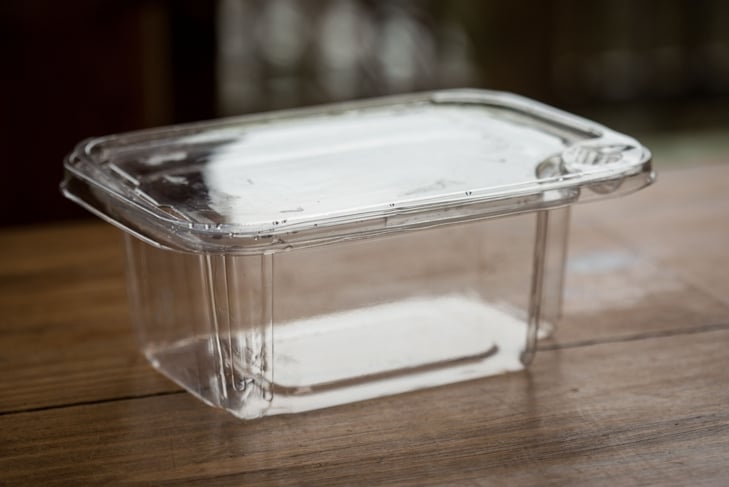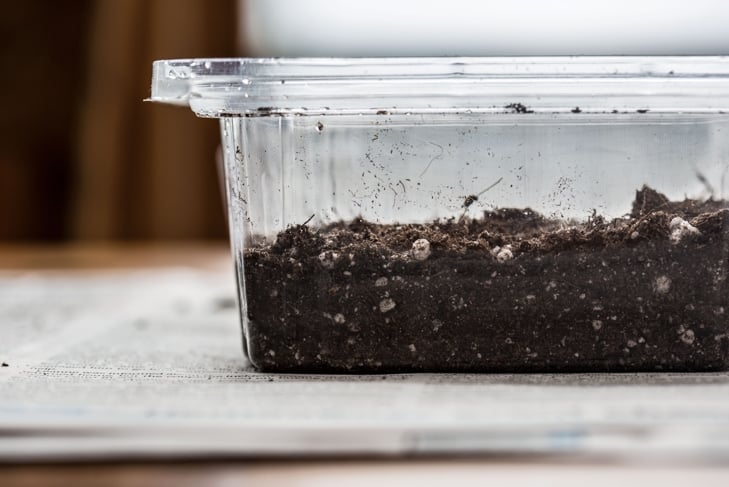
Yes, growing your own superfoods can be dead simple. When it comes to nutrition and flavour, microgreens are the little greens that could.
It’s often said that sometimes less is more. And when it comes to microgreens, this definitely holds true.
Microgreens are the very early versions of vegetables and herbs—think of them as baby houseplants that you can eat. Building upon the appeal of twee eats, microgreens are packed with macro flavour and nutrition.
Science shows that the youthful version of items such as radish and red cabbage can be more concentrated in important nutrients—including vitamin C, beta carotene, and vitamin K—than their grown-up versions. Why so lush with nutrition? Since microgreens are harvested when the plants are not yet mature they’re packed with the nutrients and antioxidants they need to grow into full-grown plants.
The flavours of the greens are intensified, too. Each bite of radish or arugula microgreens bursts with peppery flavour, pea shoots taste like the freshest peas possible, and sunflower greens have a nutty edge that shouldn’t be missed. No wonder top chefs have made them an indispensable part of their food landscape. Slip them into any meal and awaken your taste buds.
And if you’re longing for a gardening project and growing more than an appetite, but lack access to an outdoor garden plot, microgreens are the perfect indoor solution. With minimal equipment and time you can easily grow a bounty of microgreens in the comfort of your own kitchen. Here are ways to kick up your menu with some indoor farm-to-table recipes.
Recipes
Pea Shoot Savoury Pancakes

Trout Lentil Salad with Microgreen Pesto Dressing

Sunflower Guacamole

Egg, Asparagus, and Microgreen Tacos

Roasted Broccoli Microgreen Soup

Get growing
It is their short growth span that makes microgreens possible to produce on even the darkest windowsills through the dingiest months of the year.
Packages of microgreens are available at many natural health food stores and even some farmers’ markets, but for an everyday supply consider growing your own. Microgreens can thrive even in the smallest of indoor living spaces—all year long. No green thumb required.
And they’re a quick growing project if you are low on patience. Start some seeds on Monday and come the weekend, you could be reaping their flavour and nutrition rewards. No need to wait months for your vegetables to emerge. Here’s how to become an indoor farmer and ultra-local eater.
Step 1: Buy your seeds

Seek out seeds meant specifically for sprouting and microgreen growing. Natural food stores often carry packages of organic sprouting seeds. Buckwheat, pea, radish, and broccoli are particularly foolproof. But everything from kohlrabi to beet to cabbage seeds can be turned into peewee greens.
Step 2: Find a container

You can use commercial growing trays, but in the spirit of upcycling, the clamshell containers that baby greens and strawberries are packaged in can be repurposed for microgreen growing and fit nicely on most windowsills. But the breadth of container options is nearly limitless: nearly anything from ceramic bowls to Pyrex baking dishes or wicker baskets that will hold at least an inch of soil will do the trick. Since only light watering is needed, drainage holes are not a necessity.
Step 3: Soak seeds

With the exception of gelatinous types of seeds such as cress, you want to cover seeds in water and let them soak for eight to 24 hours. This wakes them up to encourage speedier germination. Start with about 1 tsp (5 mL) of smaller seeds such as kale and broccoli, and 1 Tbsp (15 mL) of larger seeds such as pea and sunflower.
Step 4: Scatter your seeds

Fill your planting container with organic potting mix or compost mixed with a little vermiculite so it comes up to about an inch (2.5 cm) from the top. Using a shallow container will help you save on soil usage. Don’t use soil taken from an outdoor garden.
Run the container under water so the soil is moist throughout. Microgreens do best in loose soil, so don’t pack it down into a brick. Drain and rinse your soaked seeds in a fine-mesh sieve and then spread them out in a single layer on top of the pre-moistened soil.
For small seeds such as broccoli and kale, use the back of a spoon to help spread them out on the soil. Microgreen seeds can be planted much more densely than outdoor vegetable seeds. So seed heavily to maximize space and consider planting seeds every few days so you have a constant supply, allowing their liberal use in recipes.
Step 5: Cover up

Cover the seeds with a damp paper towel or clean dishtowel and then place the container in a dark, warm area of your house to allow for germination. During the cooler months, placing a lid over the container can help keep in warmth and moisture. Covering the seeds with more soil can lead to uneven germination. Remoisten the towel as needed and occasionally touch the soil to make sure it’s still moist. If not, spritz with a bit more water.
Step 6: Let the light shine

Once you see evidence of seed leaves and the stems are about 1/2 to 1 in (1.25 to 2.5 cm) long, about three to four days, remove the covering and place the container in a well-lit area, such as a sunny windowsill, with good air circulation. Shortly, the plants will turn a joyful green.
Step 7: Nurture your plants

Lightly water once daily at soil level just to the point where the soil is moist like a damp sponge. Watering from above can damage the delicate leaves and stems, while overwatering can lead to rotting roots. But don’t mistake the fuzzy white stuff on the roots for mold. Instead, it’s harmless tiny root hairs.
When the first two small leaves have unfurled and the stems are 3 to 7 in (8 to 18 cm) long, your tiny forest is ready to harvest. With kitchen shears, simply cut away as many plants as you need, slightly above the soil line. Compost the soil and wash container for another planting.
Microgreens versus sprouts
Although the terminology is often used interchangeably, microgreens and sprouts are not one and the same.
Sprouts
Essentially, sprouts, which are often grown in water and not soil, are germinated seeds that have cracked open and sent out what looks like white tails, which are the making of an entire root system.
Microgreens
In contrast, microgreens are plants at the seedling stage that have two fully expanded seed leaves. Pea shoots will add additional sets of leaves.





